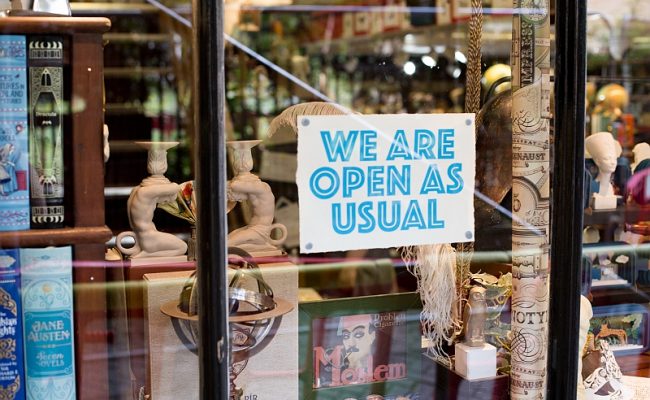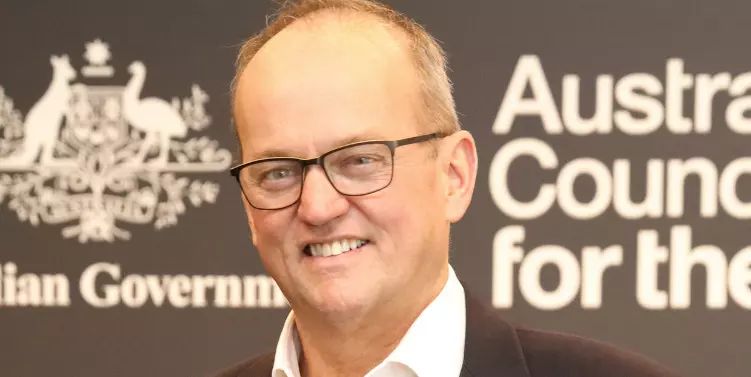Books+Publishing recently published the results of its 2022 employment survey of Australia’s book industry, following similar surveys in 2013 and 2018. Back in 2018, these survey results (and Samantha Forge’s great dissection of them) inspired workers at Penguin Random House to unionise, because they exposed just how unfair publishing wages were. This year’s results show that nothing much has changed since then.
The 2022 report focuses on wages, hours worked and bonuses of people working for various employer types. Of the 300+ people surveyed, 51 per cent work for large publishers, 25 per cent for mid-sized publishers, 6 per cent for a small publisher, 11 per cent in bookshops and 7 per cent for either libraries, literary agents, industry organisations or other industry-related employers.
Looking at the average wages, the report breaks down the ways that pay has shifted between June 2018 and March 2022, across some key departments.
- Administration salaries have dropped 3 per cent to $55,898.
- Editorial salaries are up 2 per cent to $63,643.
- Marketing and publicity salaries are pretty much the same—up 0.6 per cent to $60,543.
- Sales salaries also have hardly changed—they’re down 0.3 per cent to $58,565.
Let’s keep in mind that the Consumer Price Index has increased 10.9 per cent in that time. Although there are complications with using CPI as the measure of how much wages should have increased, I think it’s more than fair for workers to expect their pay to increase as CPI rises. If those salaries had increased fairly in the last four years, the average would now look like this:
- Administration: $63,837.
- Editorial: $69,142.
- Marketing and publicity: $66,769.
- Sales: $65,153.
Of course, even these salaries aren’t anywhere near high enough for such highly educated workers, as is commonly the case in the book industry. Most are probably reading those numbers and thinking ‘I wish I was being paid that much’.
As Books+Publishing helpfully clarifies:
The rises in average wages indicated by the data suggests that wage growth in the industry is not matching inflation and, despite nominal wage rises, many book industry employees are worse off than they were four years ago in real terms.
That is, until you look at the shift in senior management wages between since 2018. These salaries have increased 11 per cent, to $101,200 on average. Almost two thirds (64 per cent) of senior managers surveyed are earning $90k or more. Some are earning as much as $160k —a huge slap in the face of workers whose salaries are barely scraping past the $55k mark.
*
Something that is increasing with inflation is the HECS debt of every book industry worker who completed probably two degrees just to get their interview.
This week’s comprehensive Australian publishing industry workforce survey on diversity, from the University of Melbourne and Australian Publishing Association, reveals that more than 85 per cent of publishing workers have at least an undergraduate degree, compared to only 24 per cent of the Australian population, and more than half of them also have a postgraduate degree. (This survey, which is well worth a read, also revealed that the workforce is predominantly female, white and heterosexual with high rates of mental illness.)
A postgraduate degree in editing or publishing has become a standard requirement on publishing job ads, even for the entry-level positions paying less than $50k. A master’s will rack up between $60–$70k in HECS debt. As Samantha Forge highlighted in 2018, it will take most graduates until the end of their working life on $60k per year to pay that off.
HECS debts don’t technically accrue interest but they do accrue ‘indexation’—a yearly percentage increase in the amount owed ‘in order to maintain [the debt’s] real value by adjusting it in line with the changes in the cost of living’ (read: CPI increases). This year, HECS debts worsened by 3.9 per cent in line with CPI. Any paltry increases in book industry wages are being immediately swallowed by the ever-rising debt created by this industry expectation.
*
Consider the book industry’s wage stagnation issue against the unpaid overtime in Books+Publishing’s 2022 results: 93 per cent of full-time employees in the book industry work between 36 and 60+ hours per week, with 47 per cent of full- or part-time employees reporting that they ‘always’ or ‘regularly’ work overtime. However, this overtime is largely unrecognised, because less than two thirds (59 per cent) of employers offer any overtime pay or time in lieu.
In fact, a quarter of workers indicated that their employer doesn’t offer any compensation for overtime worked. While this is an improvement on the 2018 result (35 per cent), it’s still shameful of an industry that obsessively touts its own progressivism.
The industry’s understanding of overtime is complicated by the very blurred line between work and pleasure when it comes to books. For example, a book publicist or bookstore worker would be expected to attend book launches and industry events, read manuscripts or advances, and ‘network’ with authors and colleagues entirely in their own time, just to keep the job. This is also assuming that workers who are able to claim overtime or time in lieu feel comfortable doing so, which seems unlikely given how many barriers exist across the industry for accessing fair pay.
In basic terms, this recent data shows that 41 per cent of book industry employers in Australia aren’t paying workers for the total hours they work, making the workers (and their free labour) excellent value for company money. Who are these employers and how are they still getting away with not recognising overtime to employees who obviously work more than what’s in their contracts? That is literal wage theft.
*
These Books+Publishing surveys capture important and otherwise invisible data about the true conditions of the book industry, which is notorious for keeping salaries and profits private for the sake of ‘competitive advantage’.
It’s difficult to get a true picture of the exploitation in the industry without having visibility of the real profits being taken by publishers. These are not publicly available, so we can only extrapolate them using book sales reported by Nielsen BookScan. For example, publishers sold $1.18 billion worth of books in 2018, which increased to $1.3 billion worth of books in 2021. This of course includes periods of lockdown that didn’t dampen book sales anywhere near as much as workers were told they would—2020 was one of the industry’s most successful in ages. I’d say we can safely assume that if sales are increasing in value year on year but wages on the whole aren’t going up, then publishing companies and bookstores are probably making excellent profit.
So why aren’t workers (well, most of them) seeing any of this profit, despite being the ones who make, distribute and promote the books? Employers should be initiating fair wage increases across the board instead of hoarding profit. This is exactly why workers unionise.
*
The 2022 Books+Publishing data helps further demystify some of the most pernicious falsehoods that a book industry worker is taught, first by their university lecturer, then by their boss and sometimes even by other colleagues: that profits are good for workers, too; that the leadership team will eventually fix all the issues; that your hard unpaid work and long hours will eventually lead to a pay rise each year without you having to beg for it.
It’s no wonder that the last four years have seen revolt from unionised book industry workers for much-needed improvements—and they’re succeeding.
In October 2019, the first union-negotiated enterprise bargaining agreement in Australian publishing history was ratified by the Fair Work Commission for workers at Penguin Random House, the world’s largest publisher. Editorial and publicity workers at PRH had unionised throughout 2018-19 in response to a lack of company support around pay and widespread burnout, and to agitate for other much-needed improvements. With support from the Media, Entertainment and Arts Alliance, workers and management negotiated a comprehensive EBA with significant improvements for editors and publicists, including yearly pay increases, paid overtime and many other upgrades to conditions. (Is the 2 per cent increase in editorial wages reported in Books+Publishing’s 2022 results partly due to Penguin Random House’s EBA? I reckon so.) MEAA has since been working with publishing workers on subsequent EBAs.
Meanwhile, in book retail, union campaigns are securing historic wins in many bookstores, most notably at Better Read Than Dead in Sydney and Readings stores in Melbourne. With support from the Retail and Fast Food Workers Union, workers at these bookstores have been standing their ground to secure safer and more sustainable stores, despite heavy retaliation from management in both cases. In 2021, Better Read Than Dead workers won an impressive EBA that RAFFWU described as ‘the best enterprise agreement in retail and fast food history’. Readings are nearing completion on their own EBA negotiations for their eight stores, although management reneged on negotiations in August, prompting an ongoing public campaign in support of workers.
These worker-led improvements are keeping the industry accountable.
*
When it comes to being a practising author in Australia, the income averages begin to look truly absurd.
The most recent Australian Society of Authors survey of author incomes found that 81 per cent of Australian authors earned less than $15,000 from their creative practice in 2021, with 58 per cent earning between $0 and $1,999 for the full year. An earlier, more comprehensive study by Zwar, Throsby and Longden at Macquarie University found that the average income earned from practising as an author in Australia in 2013/14 (including royalties, advances, self-publishing revenue, lending rights, copyright payments, grants and other author income) was only $12,900. When asked what other financial sources authors relied on during that financial year, the most common response (37.3 per cent) was ‘the income of your partner’.
The stark financial reality of working in the book industry is a symptom of an issue that is rife across Australia’s creative industries: we don’t value art enough to pay people a fair wage to create or promote it.
This is made worse by the lack of government support of Australia’s arts sector in recent years. It almost felt like progress when Julia Gillard announced the Creative Australia national cultural policy in 2013. But, a few months later, the Coalition took power and scrapped it. Shortly after that, as reported by The Guardian, Australia Council’s funding was cut by $105 million, Screen Australia’s budget was reduced three times in eighteen months, the Book Council of Australia was ditched, and $52.5 million was syphoned off the Communications and the Arts portfolio.
Then, the pandemic hit. In 2020 alone, the arts and entertainment sectors lost $1.4 billion revenue to Covid-19 lockdowns, leading to widespread loss of income. It took nine months of pandemic and a sector-wide cry of desperation for the Morrison government to finally announce small financial support payments for workers, despite the $15 billion annual revenue that these sectors contribute to the Australian economy.
In the months leading up to the 2022 Australian federal election, none of the major parties had released an arts and cultural policy or any decent plans for reviving the creative industries. In mid-May, weeks before the election, Labor announced some funding commitments for the arts, but even eventual minister Tony Burke conceded that the commitments were a bit light on actual financial support.
Since then, with Labor in power, the Australian Government has announced that they’re developing a new national cultural policy to strengthen Gillard’s original Creative Australia. This new policy will ‘establish a comprehensive roadmap to guide the skills and resources required to transform and safeguard a diverse, vibrant and sustainable arts, entertainment and cultural sector now and into the future.’
It would be a great start.
Image by Tetiana Shyshkina






